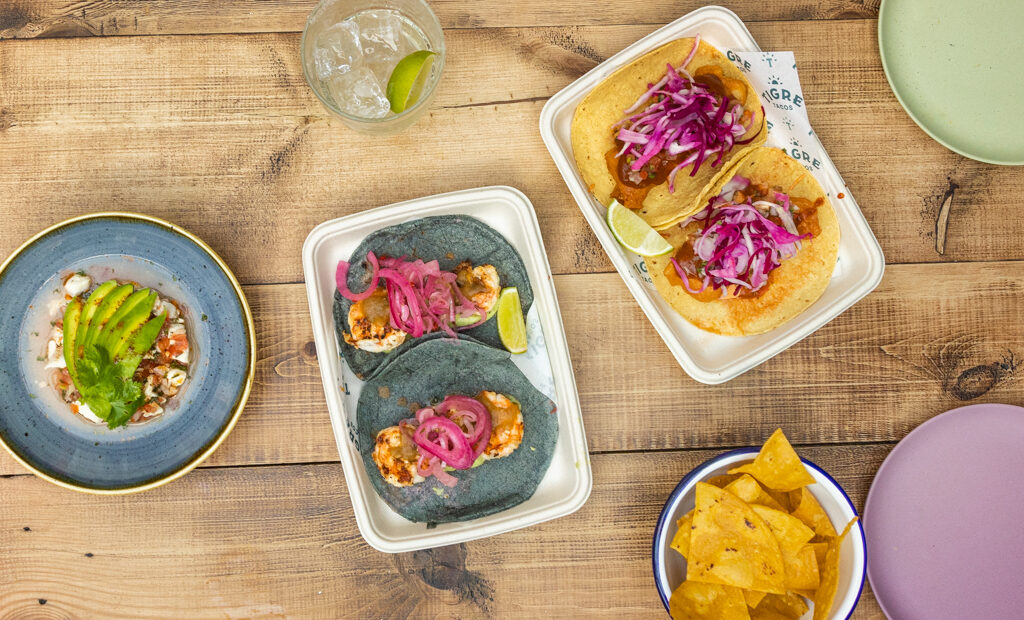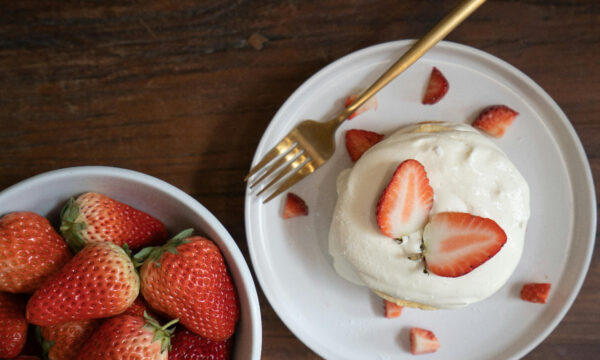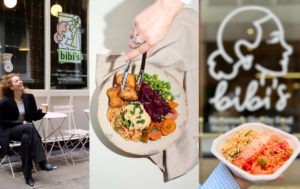Tacos to tostadas: A guide to Mexican cuisine

Most of us will have sampled nachos, burritos, and chilli con carne in our rainy English lives, but what if we are doing it all wrong? Mexican cuisine is incredibly intricate, with all kinds of faces and rich histories. The vague sense Brits have of it is commonly defined by Tex-Mex, rather than the more traditional but diverse foods across the vast Central American country.
The creation of the Tejanos (the Texan descendants of Spanish colonists in northern border states), Tex-Mex food fuses Spanish, Mexican and American cuisine. There has been a gradual emphasis on the American, as opposed to the Spanish, with items such as nacho cheese an example of how American tastes have been assimilated into Tex-Mex.
The question on the food lover’s lips, then, is what exactly does “authentic” Mexican food mean? This article will give a good idea!
The tortilla and its various incarnations
Chimichanga
Tortillas are everywhere In Mexico, but the popularity of Tex-Mex has meant that a typical understanding of what goes in the burrito, for instance, is Americanised. The authentic dish that most closely resembles a tortilla filled with meat, cheese, rice, beans and guacamole is actually the chimichanga. One still has the works (rice, cheese, beans, with a side of chilli, salsa, and sour cream), but the fundamental difference here is that the modern American burrito (ironically) isn’t the deep-fried one. Chimichanga sinks a flour tortilla, stuffed with all the goods, into a deep-fat fryer for a golden crunch. For those already looking for ways to try this delicacy at home, Mexican food brand Gran Luchito has you covered with some delicious authentic recipes.Tostadas
Another dish among the tortilla’s numerous variations is a crispy, corn shell piled high with meat, cheese, salsa and other delights – which might sound like a taco, but this is another American (mis)appropriation. Unlike the crispy tostada, the taco is normally soft, like the burrito, only smaller. Taco Bell may have spread the notion of a taco being crunchy, but diners picturing a crispy, golden-brown tortilla are actually thinking of the tostada, filled with a hot mess of refried pinto beans, white cheese, shredded lettuce and salsa. The gordita (or “chubby” to its Spanish-speaking friends) is another popular, masa-based corn tortilla, chock-full of cheese and meat (normally chincharrón – fried pork belly or rinds).Quesadillas and enchiladas
Warm, griddled tortillas, folding together cheese, meat, peppers and other vegetables, make up the quesadilla – “little cheesy thing”. Indigenous Aztecs in Northern Mexico were used to stuffing their tortillas with squash and pumpkin, until some maverick decided to include cheese – an item brought by Spanish settlers around the 16th century. These little pockets of taste haven’t been the same since. The enchilada similarly rolls a rich, meaty filling inside a tortilla, but takes it one step further: flour tortillas are exchanged for corn, smothered in a seasoned red or green tomato and chilli sauce. Those who want to feel knowledgeable while savouring that melted queso should check out History Today for a great explainer on the relationship between Mexican cuisine and its Spanish colonisers.Sopes
Finally, there is the curious sop – a corn tortilla dough moulded into a shallow pie, almost resembling the French tartine in its lightness and tactile style of eating. The base for the finger food is typically made with masa harina (maize dough), water, salt and oil, which Mexicans treat like a bed for any number of toppings, including chicken and vegetables, usually in abundance.
Desayuno
In Mexico, a traditional desayuno (breakfast) involves eggs, beans, salsa and tortillas. One of the more creative brunch staples is chilaquiles, a sister dish to nachos, consisting of toasted tortilla chips ladened with shredded chicken or fried eggs. It’s then topped with crema (a tangy twist on crème fraiche, with added lime and salt) and melted cheese.
The egg, or huevo, features heavily in Mexican cuisine, and the layperson is likely to have at least heard of huevos rancheros, or sampled a breakfast burrito. The Yucatan region in Southeastern Mexico prefers a serving of two eggs, dripping with salsa picante, black beans and white cheese atop corn tortillas. This is called huevos motuleños, after its birthplace in Motul. Meanwhile, other regions swap beans for rice, papas (potatoes) or tomatoes.
Chili sauce
Mexican sauce is a great example of how this cuisine explores a host of distinct styles of cooking and vibrant flavours. The ubiquitous role that corn plays in food across the country is another instance of what miracles Mexico’s people can make out of everyday items. However, it’s in chilli that Mexican culinary ingenuity really shines, in ways that are untapped outside of the country.
Salsa may automatically come to mind, but mole (pronounced moe-lay) is Mexico’s most famous and authentic chilli-based sauce. There are numerous regional variations, and some of the most notable – namely Oaxacan and Pueblan – incorporate chocolate. The sauce is notoriously difficult to make, with heaps of ingredients individually fried in lots of oil to carefully elevate the flavour of each item. For Oaxaca alone, Epicurious has outlined the seven main types of mole, with ingredients ranging from pineapple to plantain.
Cacti
Mexico’s rugged, natural terrain is home to an unconventional delicacy: the cactus. Beyond being the base of the mezcal spirit, the paddles (or nopales) of the prickly pear cactus are one of the lesser known and yet most authentic foods of Mexico. They take many forms, from raw or boiled to grilled, sautéed, stewed, con huevos, or even pulverised into tortilla dough.
But newcomers beware, a cactus is, of course, spiky as hell, and it may take the body some time to get used to since it is an unusual ingredient, Foodies shouldn’t let that dissuade them, though it may be wise to gain the insight of a cactus connoisseur to help before incorporating cacti as ingredients (and if one is ever in the Mexican desert without having done any research into how to get rid of the pretty unforgiving spiky spines and glochids, that’s another story).
Bebidas
Soft drinks
In terms of beverages (bebidas) a la Mexicana, one can’t get any more traditional than atole. This hot drink, born from Mexico’s iconic Day of the Dead celebration, consists of masa corn, cinnamon and vanilla, and has a grainy porridge-like consistency. As an alternative, a bit like the American snow cone, the tangy, sweet and summery raspado is a popular shaved ice slushy, blended with chamoy (a sweet and savoury sauce). The name itself means “to scrape”, deriving from the Spanish raspar.Alcoholic drinks
Anyone looking for something a little more intoxicating can be sure of the worldwide reputation of Mexican beer (cerveza), which essentially boils down to one word: Modelo (the parent company of Corona). For the more adventurous, the folk of coastal state Veracruz created the Vuelva de la Vida, a zesty and sharp tonic for a heavy night, blended from oysters, crabmeat, shrimp and octopus. These are whisked with chopped tomatoes, coriander, red onion, lime and seasoning, then furnished with avocado slices and occasionally fizzy orange soda.
Another sangre maria-esque bar staple, the michélada mixes lager, chlili pepper, tomato, a range of usually chilli-based spices and tomato juice in a salt-rimmed pint glass. The name itself is a portmanteau of “mi chela helada” – or “my ice cold beer”. Salud!
The editorial unit

























Facebook
Twitter
Instagram
YouTube
RSS